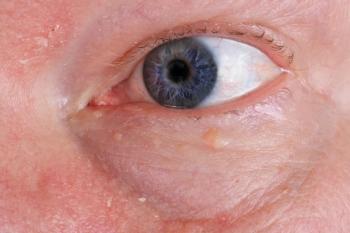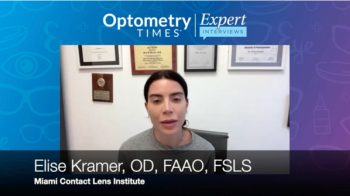
Intravitreal implant shows potential for treating the root causes of glaucoma and diabetic retinopathy
New clinical trials reveal PER-001 as a groundbreaking treatment for glaucoma and diabetic retinopathy, showing significant vision improvements and safety.
Two phase 2a clinical trials showed positive results for the PER-001 intravitreal implant as the first disease-modifying treatment for glaucoma and diabetic retinopathy (DR), according to a press release issued by Perfuse Therapeutics.
The company issued the following topline results:
- Progressive vision loss was reversed in patients with glaucoma with improvements in optic nerve blood flow and structure.
- Patients with DR had improvements in vision, retinal ischemia, and structure.
- PER-001 demonstrated a favorable safety and tolerability profile in DR and glaucoma.
PER-001 is described as a first-in-class small-molecule endothelin receptor antagonist designed to address glaucoma and DR. Endothelin, the most potent vasoconstrictor in the human body is upregulated in glaucoma, DR, age-related macular degeneration (AMD), and retinal vein occlusion and is involved in inflammation and cell death through its receptors expressed in retinal vascular and neuroretinal cells.
Both 6-month trials were randomized, controlled studies that evaluated PER-001 delivered in a slow-release, dissolvable implant injected intravitreally every 6 months. The results of both studies showed significant visual improvements compared with the controls. A total of 33 participants were enrolled in the glaucoma trial, and 27 participants in the DR trial.
The rationale underlying the therapy is the targeting of the underlying cause of both diseases, with the goals of improving retinal blood flow and preventing apoptosis of retinal cells that occur in ocular diseases, according to the press release.
Phil Lai, MD, chief medical officer of Perfuse Therapeutics, said, "Our goal is to pioneer the first disease-modifying treatment for ocular diseases that share a common underlying pathology of ischemia—starting with glaucoma and DR and rapidly expanding into dry AMD. Our studies showed that PER-001 has the potential to transform care for leading causes of blindness, delivering sustained benefits that not only prevent blindness but also improve vision."
PER-001 for glaucoma: Visual restoration
The key findings from the Phase 2a glaucoma trial showed the following after 1 intravitreal injection of PER-001 released over 6 months when added to existing standard-of-care intraocular pressure-reducing therapies:
- 22.2% of low-dose and 37.5% of high-dose patients experienced an improvement of 7 decibels (dB) or greater in a predefined retina region of a minimum of 5 test points compared with 0% in the controls at 6 months. This improvement is 8 to 14 times better than the natural disease history (2.7%) with currently available treatments.
- No patient treated with PER-001 had a loss of 7 dB or greater compared with 12.5% of the controls at 6 months. The control rate of a 7-dB loss or greater observed in this study is consistent with the natural disease history (13%) with currently available treatments.
In commenting on the results, Joel Schuman, MD, professor and K.L. Roper Endowed Chair, Department of Ophthalmology at Wills Eye Hospital, Philadelphia, and president of Collaborative Community on Ophthalmic Innovation, said, "Many people continue to have worsening glaucoma despite what is considered to be a safe IOP. A holy grail in the treatment of glaucoma is the ability to reduce optic nerve damage by means other than lowering the IOP. For the first time, Perfuse's Phase 2a glaucoma trial demonstrates neuroenhancement and improved function of existing optic nerve tissue in humans with glaucoma. The patients treated with PER-001 in this trial remarkably showed improved visual field performance, while those in the control group continued to deteriorate. In addition, patients receiving PER-001 demonstrated improved ocular blood flow and optic nerve structure. Importantly, there is currently no FDA-approved drug for treating glaucoma. The current study results are most encouraging, demonstrating the potential for a radically new, transformational treatment approach for this disease."
PER-001 for DR: improved vision and ischemia
Key findings from the DR Phase 2a trial showed that 1 intravitreal administration of PER-001 released for 6 months led to:
- Improved function (contrast sensitivity, visual acuity [VA], and visual field). There was a mean +0.9-dB improvement in low-luminance contrast sensitivity in the high-dose group and +0.65-dB in the low-dose group across multiple frequencies at week 20. In contrast, a mean -2.1-dB worsening occurred in the control group during the same period. This corresponds to a difference of 2.75-dB to 3-dB magnitude for the low- and high-dose groups compared with controls; 3 dB is equivalent to 15 Early Treatment of Diabetic Retinopathy Study letters (3 lines). The low-luminance, low-contrast VA was better by a mean difference of 5.5 and 5.1 letters from baseline in the low- and high-dose groups compared with controls at week 20. Patients with reduced peripheral vision had an improvement of +1.8 dB/year with PER-001 compared with +0.01 dB/year in the control group at 6 months.
- Improved structure (macular ischemia, macular leakage, and macular microaneurysms by ultrawide-field fluorescein angiography): PER-001 treatment improved the macular ischemia index, macular leakage, and macular microaneurysms across both doses compared with worsening in control at 6 months. The Diabetic Retinopathy Severity Scale remained largely stable across all groups.
Arshad Khanani, MD, clinical professor of ophthalmology at the University of Nevada, and director of clinical research at Sierra Eye Associates, Reno, said, "The results from the Phase 2a study of PER-001 represent a major advancement in DR treatment. For the first time, a therapy for DR results in improved visual function. These functional gains in peripheral vision, contrast sensitivity, and VA accompanied by structural improvements in retinal ischemia, leakage, and microaneurysm validate the PER-001 mechanism of action. By targeting the endothelin pathway, PER-001 introduces a novel, every-6-month therapy to address the underlying neurovascular disease and offer vision benefits with the potential to be disease modifying for DR and other ischemic retinal conditions."
Perfuse Therapeutics plans to initiate pivotal phase 2b/3 trials across both indications with a larger population of patients over a longer period, starting in the second half of 2025.
Newsletter
Want more insights like this? Subscribe to Optometry Times and get clinical pearls and practice tips delivered straight to your inbox.













































